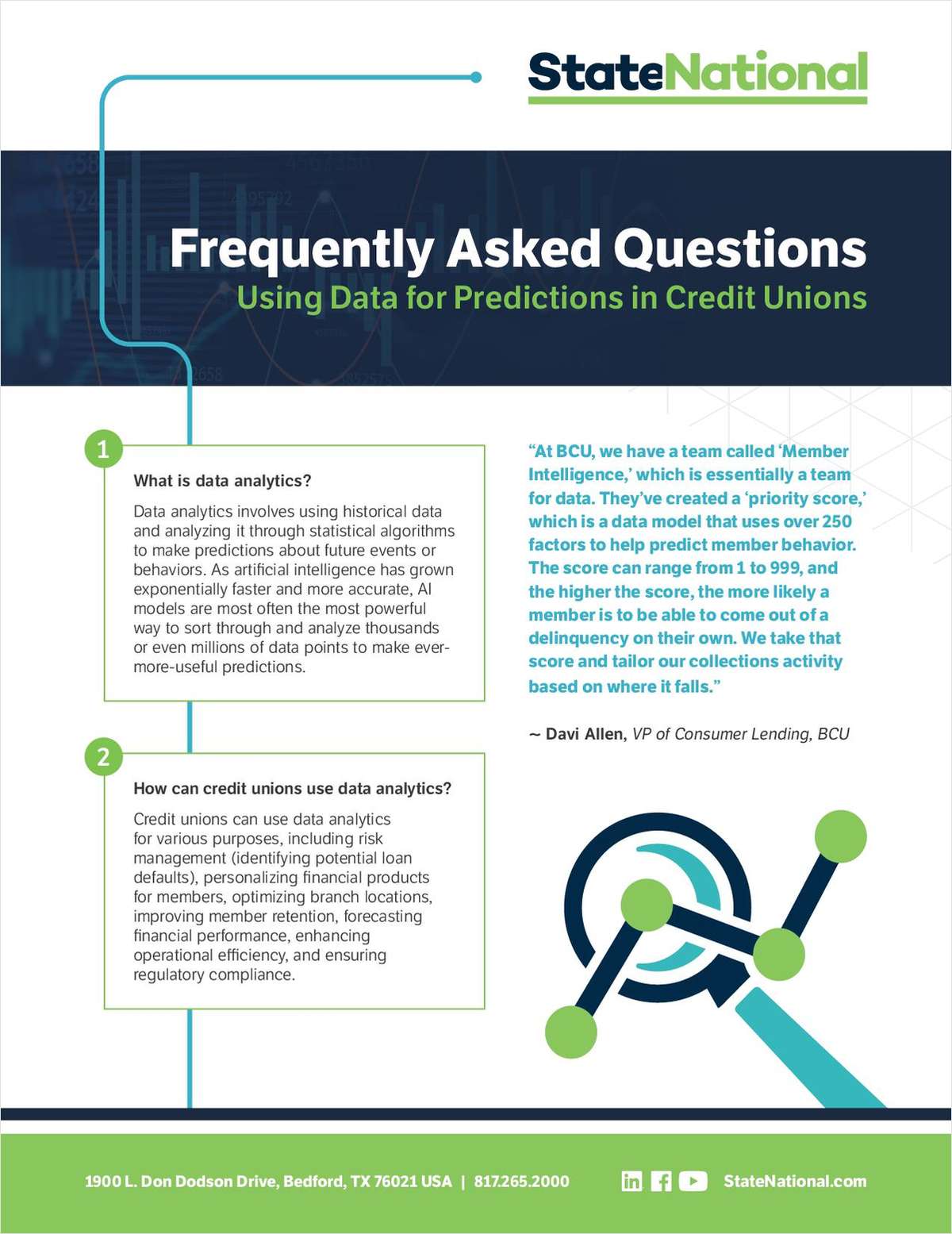CU Times recently reported that credit unions currently finance one in every four vehicles sold. According to CU Direct Market Research Analyst Jose Torres, new car sales are expected to reach 17.7 million in 2017, a 3.3% increase over last year. As the competition for members' auto and personal loan business rises, credit unions should further evaluate how they measure their consumer lending success. The time when success was measured solely by loan volume growth is over. Now, credit unions should ask: Are loans retained for the life of the loan? Are portfolios strong? And, most importantly, are members financially secure in their loan commitments?
When a loan is originated, it is just that: The origin. This beginning stage sets the tone for the entire loan experience. Credit unions should view the loans they originate in the same manner. They can identify ways to check in with members to determine the impact the loan has on their lives, and assess whether personal or financial circumstances have changed since the loan was originated. This is what modern day members have come to expect from a trusted financial institution partner – something that also plays a role in long-term loan retention. Credit unions should ensure their members understand that if the terms of the loan that once worked now pose a financial challenge, they can and should be having a discussion with a credit union representative to address the issue.
Unexpected expenses and income changes are a part of life. While a loan modification was once viewed as too much of a hassle for most members to consider (and likewise, too resource intensive for credit unions), that is no longer the case. New technology can transform the notoriously daunting process of a loan modification. Now, not only can it be simple and fast, but members are even able to initiate a loan modification online from the privacy of their own home. This level of service helps members when they need it, and can be a considerable selling point for those initially evaluating their options with various competing lenders.
Complete your profile to continue reading and get FREE access to CUTimes.com, part of your ALM digital membership.
Your access to unlimited CUTimes.com content isn’t changing.
Once you are an ALM digital member, you’ll receive:
- Critical CUTimes.com information including comprehensive product and service provider listings via the Marketplace Directory, CU Careers, resources from industry leaders, webcasts, and breaking news, analysis and more with our informative Newsletters.
- Exclusive discounts on ALM and CU Times events.
- Access to other award-winning ALM websites including Law.com and GlobeSt.com.
Already have an account? Sign In
© 2024 ALM Global, LLC, All Rights Reserved. Request academic re-use from www.copyright.com. All other uses, submit a request to [email protected]. For more information visit Asset & Logo Licensing.









